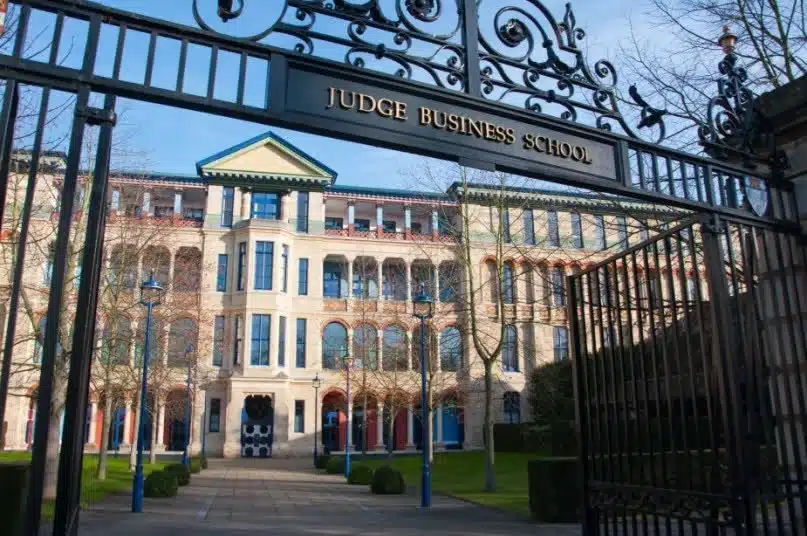Free MBA Leadership Essay Samples
One of the most difficult situations I have ever had face during my tenure as VP of my company was the decision whether to fire Jane, an experienced employee, who I had worked with closely for two years. The decision arrived at my desk after a new CEO was appointed, and I became his VP, in charge of most employees. Together, we decided that we were going to transform our small and quiet company into a leading research firm with a target of 50% sales growth over the next 2 years. For that, we needed a devoted team that was committed to this goal.
This vision did not fit Jane. She left a large corporation where she worked long hours, and one of the main reasons she chose to join us was the laid back and relaxed atmosphere of a small company- exactly what we were determined to change. Although talented, she did only the minimum necessary, and was not willing to make any sacrifices and commit to our goal.
I faced a tough decision. On the one hand, firing a talented and experienced employee, in a time when most of the employees were new (as we wanted to drive growth we recruited new people), seemed unwise. In addition, I knew that our relationships with major clients might get hurt and a substantial knowledge base would be lost
On the other hand, not firing her would mean establishing double standards for our employees – most were required to work hard, whereas Jane was leaving early and refused to contribute extra efforts. Her opposition to the change had already begun creating undesired effects, as a few of the employees resented her.
In order to solve the problem, I tried to make Jane relate to the new goals and change her attitude. In addition, we also improved the company's bonus program, based also on her comments, in order to reward the extra efforts. When all milder measures failed, I had to make a decision.
I decided to fire Jane. Although I knew that in the short run things would be difficult, I concluded there was no other way. I needed the most dedicated team possible, a team who was personally committed to the growth of the company. Jane, as head of a major division, would have undermined this effort in the long run.
Personally, making the decision was very hard. It meant firing someone with whom I had worked with closely for a long time. However, In terms of team spirit, matters improved greatly, and we succeeded in building the right team to lead the company forward. The new division head that replaced Jane was a highly motivated manager, and with her I had a team that could reach the ambitious goals we set, and indeed, in two years we have doubled the company's project capacity, with a great improvement of research quality and customer satisfaction.
"The deputy CEO, Dan, wants to meet you!" were the words that started my work day. Dan just returned from a meeting with the president of Europe's 3rd largest food producer. He reported that the company is interested in closing a multi-million dollar deal with us on one condition – that we improve our product's appearance.
As R&D manager of my company, the world's 3rd-largest specialty soy proteins producer, I was tasked with leading this project. The problem has been known in the company for years, but was never resolved. I led and supervised 21 employees, coordinated the work of 40 people, and 2 weeks later implemented a solution.
During the initial discussion with Dan and 5 senior managers, I suggested the methodology for solving the problem. I presented the feasibility of the proposed solution and an initial estimate of the costs, and operational implications. The Marketing VP said "this is exactly what we need! When can you deliver?”
However, I felt our suggested solution was operationally premature. Despite estimates that we need to come up with a solution within 2 weeks, I asked for 2 more weeks to conduct trials. "We have nothing to lose – we're starting full scale production tomorrow!" Dan and the CTO said. I explained that the financial consequences of failure would be tremendous and that we must also ensure we provide a consistent solution. Ultimately, they approved the trials.
Right after the meeting I gathered my R&D staff of 6 researchers. I presented the issues, emphasized the significance of the business opportunity, and defined a timetable. I also asked the Marketing VP to evaluate the magnitude of the problem in other markets. His report revealed more opportunities that solving the problem will create. This required my direct collaboration with 5 marketing people operating in more than 50 countries, 3 application managers, and our China production facility.
I led the coordination of the full scale trial with senior management, the marketing and operations departments, and application managers. During production I supervised the work of 17 employees. The production turned out to be 100% successful in terms of resolving the problem. It created no operational problems and maintained the original product's quality. I felt very proud.
A shipment was sent to the customer for re-evaluation, and received his approval. This was the first time in my 3 years at my company that a process was successfully changed on the first try. However, not everybody embraced the solution. The company's chief operating officer wasn't excited because of implications on operations. After several weeks of discussions I persuaded him this was the only way.
Ultimately, my work provided the conditions for facilitating a $2 million deal, the company's largest new contract that year. By resolving a problem that existed for 4 years, I also affected customers all over the world.
I chose to share this experience because I feel it highlights several leadership aspects. Solving the problem required me to lead a wide variety of people in my country and abroad. It also entailed close interaction with the company's senior management. Most importantly, this project required me to present a new vision and convince others to adopt it.
My leadership experience includes mainly my managerial experience at my company. The greatest challenge I faced was building my research team at my company.
When I entered my current position, after the replacement of the company's CEO, I knew I had to make changes in the company's structure and methodologies. Up till then, the company was a "one man show". The previous CEO had worked directly opposite freelance analysts, and neither organized work processes nor research methodology existed. The company relied solely on the analyst's personal abilities, which caused inconsistency in projects' quality and customers' dissatisfaction.
In order to change that, I hired 5 research managers, re-defined responsibilities and tasks throughout the company, and spearheaded the formulation of a new research methodology. The new methodology gave us an edge over our competitors, and established the company as a brand name for quality research.
One of the most difficult decisions I had to make was firing Karen, a veteran member of my team. Transforming my company into a leading research firm required a devoted team that was committed to this goal, and willing to make extra efforts. This vision did not fit Karen. She was looking for a laid back position, and although talented, she did only the necessary minimum.
I faced a tough decision. On the one hand, to fire an experienced employee, in a time when most of the employees were new, seemed unwise. On the other hand, not firing her would mean establishing double standards for our employees, and might cause resentment in the entire team.
After I failed to change her attitude, I decided to fire Karen. Although I knew that in the short run things would get difficult, I concluded there was no other way. I needed the most dedicated team possible, and Karen, as head of a major division, would have undermined this effort in the long run.
Personally, making the decision was very hard. It meant firing a colleague, with whom I had worked closely for a long time. However, in the long run, team spirit improved greatly and I succeeded in building the right team to lead the company forward.
I believe that the role I will play in my study group will be the level-headed planner, who analyzes a complicated situation, prioritizes tasks, and assigns responsibilities. I will be the one that tries to find the solution when there seems to be a dead end and points out the hard facts that others prefer to overlook. When other people are in charge, I will be the one they go over their plan with, in order to find pitfalls and loose ends. On the other hand, I'll also be the one encouraging the team that we can conquer whatever destination we set our mind into, and willing to take a risk in order to achieve that.

אוניברסיטת קיימברידג'
